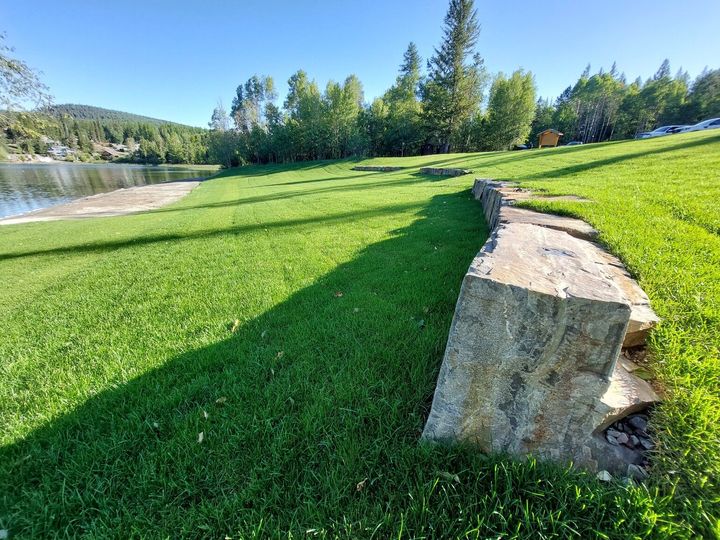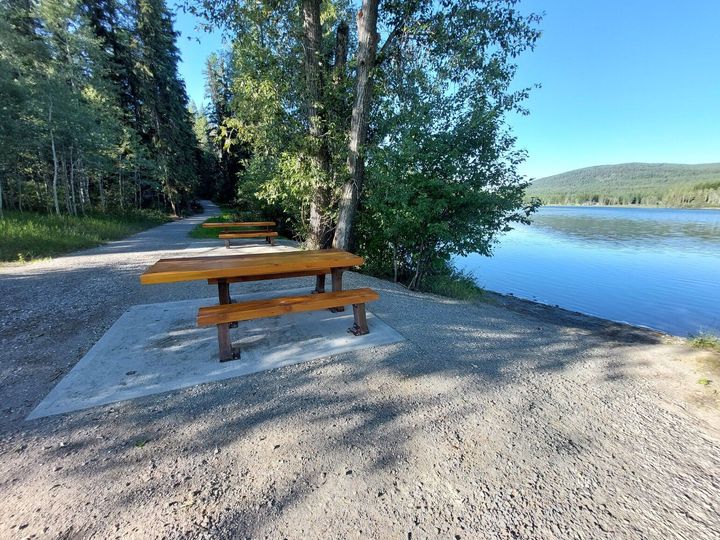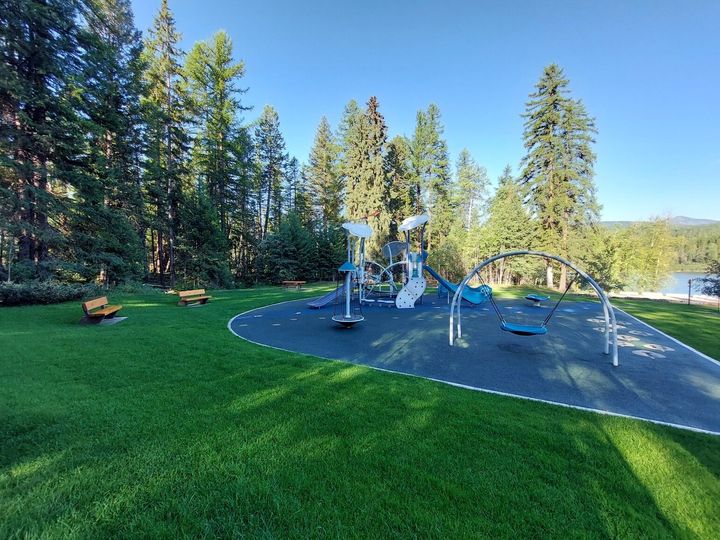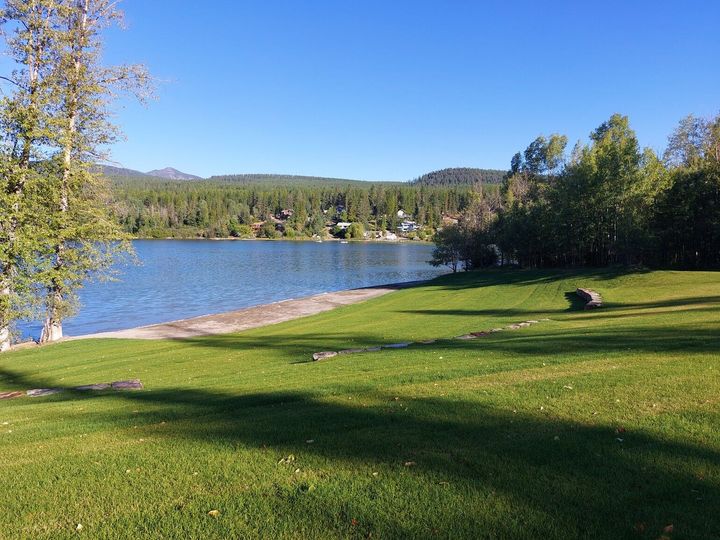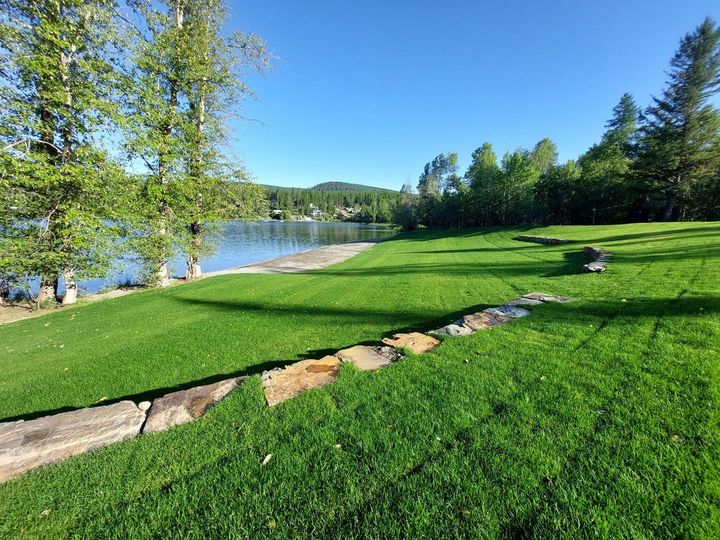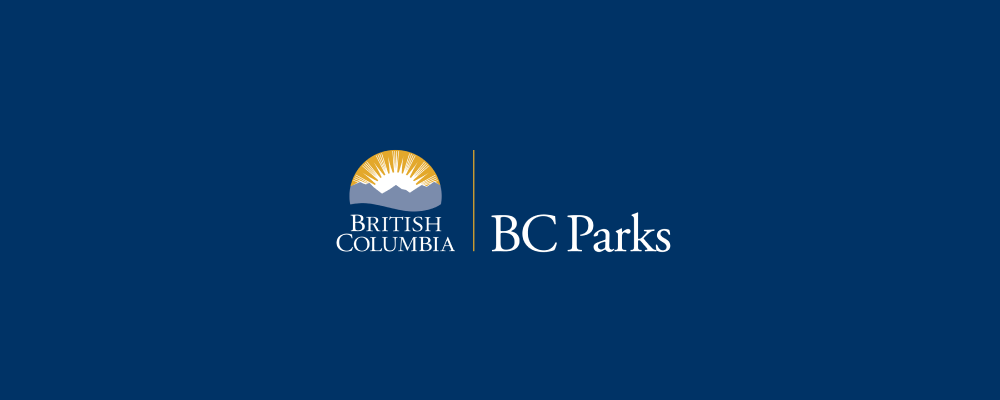Know before you go
Advisories
Safety information
- Mountain and lake weather can change rapidly. Be prepared. Visitors should be aware that high winds can come up quickly.
Special notes
- Quiet time is 11pm to 7am. Please refrain from the use of power equipment such as generators during these hours.
Review the detailed guides under visit responsibly for more information on staying safe and preserving our natural spaces.
Visit responsibly
Follow these guides to ensure your activities are safe, respectful, and ecologically friendly:
Maps and location
Getting there
Approximately a 20 km (15 minute drive) south of Cranbrook on Highway 3/95. The small community of Moyie is located 5 km south of Moyie Lake Park.
Things to do
Moyie Lake Park has two nature trails that offer interpretive signage. The “Kettle Pond” Trail starts at the amphitheatre behind site #1. The “Meadow Trail” can be accessed near the park entrance across the road from the information shelter.
There are 2 km, approximately 45 minutes, of trail, that takes you through a forest community typical of the Moyie Valley. Bicycles are only permitted on the main section of this trail. For your own safety and the preservation of Moyie Lake Park, obey posted signs and keep to designated trails. Shortcutting trails destroy plant life and soil structure.
This park offers a sandy beach and day-use area, backed by a large grassy area. Moyie Lake water is cool and refreshing.
There are no lifeguards on duty in BC Parks.
Kokanee and burbot are two of a number of species are found in Moyie Lake. Ice fishing opportunities are popular during the winter season.
Anyone fishing in British Columbia must have an appropriate licence. To learn more, see the fishing and hunting guide.
Find fun summer outdoor learning experiences with Discover Parks Ambassadors here all summer long. For specific dates, along with many more seasonal and year-round activities, visit discoverparks.ca.
Find fun summer outdoor learning experiences with Discover Parks Ambassadors here all summer long. For specific dates, along with many more seasonal and year-round activities, visit discoverparks.ca.
Pets and domestic animals must be on a leash at all times and are not allowed in beach areas or park buildings. You are responsible for their behaviour and must dispose of their excrement. Backcountry areas are not suitable for dogs or other pets due to the potential for problems with bears and other wildlife.
Bicycles must keep to roadways or on permitted trails. Observe regulatory signs. Bicycle helmets are mandatory in British Columbia. For details on e-biking within Moyie Lake Park, see the e-biking section.
Please note that bicycles with electric assist motors (e-bikes) are permitted on signed or designated trails within Moyie Lake Park, provided they meet the definitions and criteria for e-bike use as outlined in the BC Parks cycling guidelines.
Ice fishing opportunities are popular during the winter season. Anyone fishing or angling in British Columbia must have an appropriate licence.
About this park
It is from the prevalence of water that Moyie received its name. Previously known as McDonald’s River and the “Grand Quete,” the name that endured was Moyie, a derivative of the French “Mouille” meaning “wet.” Moyie Lake Park was established in 1959 to provide day-use and camping for local visitors as well as the traveling public.
A small wilderness area on the north shore of Moyie Lake consisting of lightly-forested land on the lower eastern slopes of the southern reaches of the Purcell Mountains, Moyie Lake Park protects vibrant riparian areas and features pond and forest trails. The preserved habitat is home to beaver, muskrat, water fowl, whitetail deer and numerous woodland birds.
Moyie Lake is a unique “kettle pond” lake, the result of a depression created at the outflow of a glacier. The 90.5 hectare park contains two distinct types of plant life based on moisture regime. Larch, Douglas fir, lodgepole pine and white spruce flourish in the drier areas. Predominate along waterways are black cottonwood, trembling aspen, willow and alder.
Reconciliation with Indigenous Peoples
BC Parks honours Indigenous Peoples’ connection to the land and respects the importance of their diverse teachings, traditions, and practices within these territories. This park webpage may not adequately represent the full history of this park and the connection of Indigenous Peoples to this land. We are working in partnership with Indigenous Peoples to update our websites so that they better reflect the history and cultures of these special places.
Contact
| Reservations, changes, and cancellations | Our call centre is open from 7 am to 7 pm Pacific Time. There is a $5 fee for reservations, changes, or cancellations made by phone.
|
|---|---|
| Park operator | This park is operated by EK Parks Ltd. |
| General questions and feedback for BC Parks | We answer emails weekdays from 9 am to 5 pm Pacific Time. |
